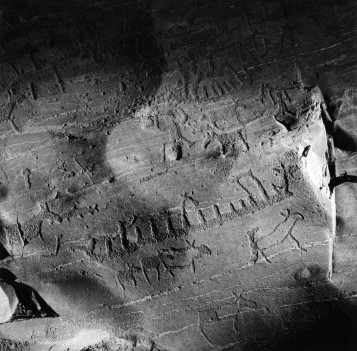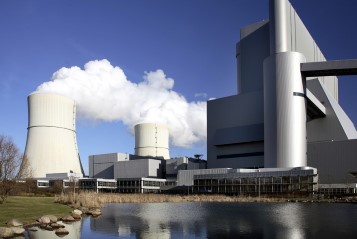Killing criticism in the 1920s
The beginning of the 1920s was a turbulent time for Vattenfall. It was accused of wasting taxpayers' money, of conning farmers and paying too much for water rights. In the media, Vattenfall was referred to as 'the rotten egg among communications utilities'.

"To the world event" - Prime minister Hjalmar Branting gives a bag of money to the Trollhättan elektrotermiska bolag. Vilhelm Hansen observes. A drawing from a Skaraborg newspaper from 1921 Year: 1921 | ID: VF001033
The problems started in 1921. In December of that year a political dispute broke out when the centre-right wing of the state auditors directed sharp criticism at the Social Democratic government of Branting. It was all about a power contract signed by two companies: Trollhättan's elektrotermiska AB and state-owned Vattenfall. During cheaper times, the company had signed a contract to lease a sizable amount of electricity until 1939. But due to a lack of water, Vattenfall released the company from its contract, and gave an ample compensation. Critics claimed that the Trollhättan company was insolvent anyway, so the issue would have resolved itself. And Vattenfall would not have been required to pay anything. Several newspapers, including Dagens Nyheter, accused the Social Democrats and Vattenfall of having wasted SEK 12 million. Vattenfall's Director General Vilhelm Hansen rejected the accusations and said that in the current budgetary situation it had actually brought a great profit.
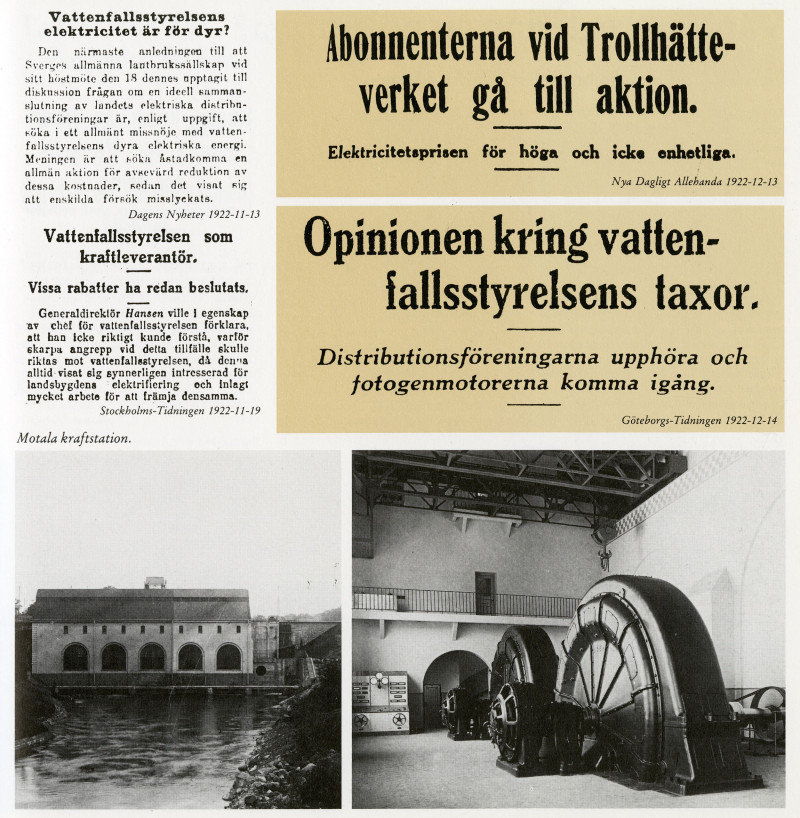
Motala power station and newspaper headlines about Vattenfallstyrelsen's and Trollhätteverket's prices being too high. From the book 'Vattenfall på Vilhelm Hansens tid: Vattenfall 1909-28 - en krönika av Charlie Cederholm'. Year: 1983 | Place: - | Creator: Okänd | ID: VF001034
The following year was especially difficult for Vattenfall and Hansen – who also celebrated his 60th birthday that year. The Swedish distribution associations were unhappy with Vattenfall's pricing. The associations were cooperative organisations that expanded retail distribution of electricity to rural areas. Following the First World War, many associations were facing a financial crisis.
Electrification had been more expensive than expected, and during the First World War, the distribution associations mainly financed their local grids through loans. After the war came the Depression and farmers' incomes fell. But the loans now needed to be repaid from income that had fallen due to deflation. Vattenfall became the scapegoat for the expensive electrification.
Criticism was directed at Vattenfall from various directions – interest groups, members of parliament and farming magazine Vårt Land och Folk, who claimed that the farmers had been duped. Several inquiries were set up. However, the conclusions were that while agriculture was suffering, it was not suffering any worse than other industries.
'The rotten egg among communications utilities'
Vattenfall was attacked that same year, 1922, in the press and in the Swedish parliament for an entirely different matter. A member of parliament made serious allegations against Vattenfall's survey staff, who were responsible for the preliminary work for the regulation of Lake Vänern. It was claimed that 'instead of performing their duties, they have acted as rough freebooters and for their own pleasure taken long detours on the lake with forays into the surrounding towns'.
In one editorial, Vattenfall was even described as the 'rotten egg among communications utilities'. Hansen was very upset about the allegations. He responded that the criticism was 'mere stories'.
The state auditors expressed even more criticism in 1922. This concerned how Vattenfall had acquired a number of water rights in the rivers Indalsälven and Ångermanälven. For assistance in this, Vattenfall had employed the Webjörn brothers, who in some cases worked as sellers, while in others they had served as agents for the rights. The auditors claimed that the brothers had received far too much for acting as agents. An inquiry found that Vattenfall had paid SEK 371,269 to the brothers for the Stadsforsen rapids, for which the brothers had paid only SEK 110,500. For the Österåsforsarna rapids, Vattenfall had paid SEK 600,000, for which the brothers had paid SEK 73,400. In total, the brothers had earned SEK 940,000 from its dealings with Vattenfall. Vattenfall was again forced to defend itself. 'You have to pay to get help from such skilled people'.
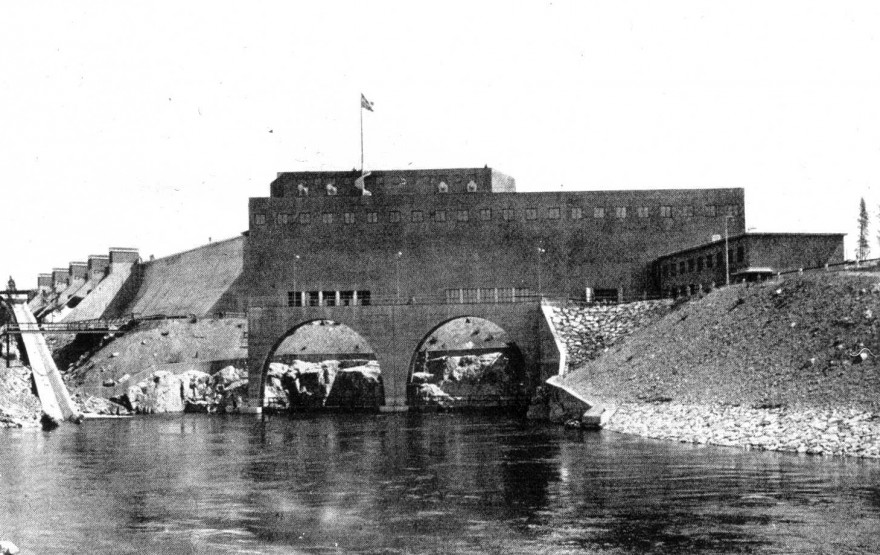
Midskog power plant. Located at the river Indalsälven. Year: 1944 | Place: Midskog | Creator: Vattenfall | ID: VF000112
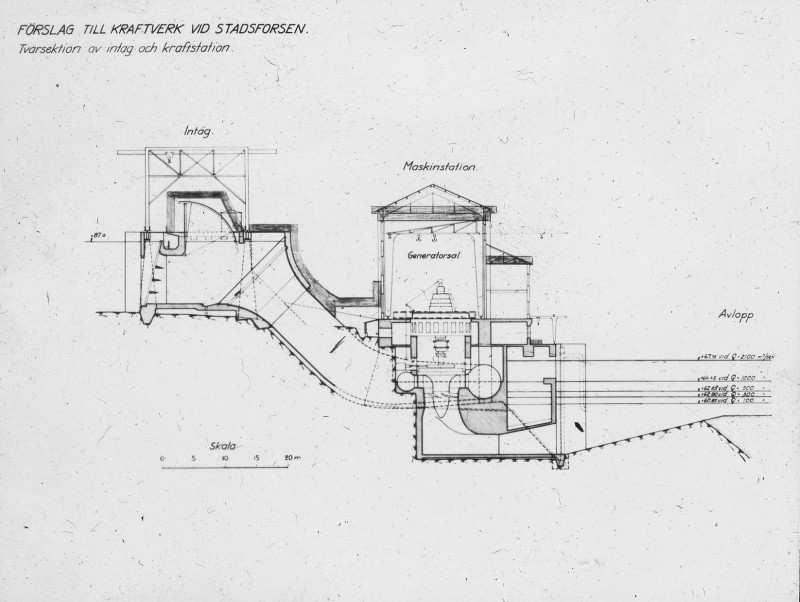
Stadsforsen power plant. Year: 1922 | Place: Stadsforsen | Creator: Vattenfall | ID: VF000113

